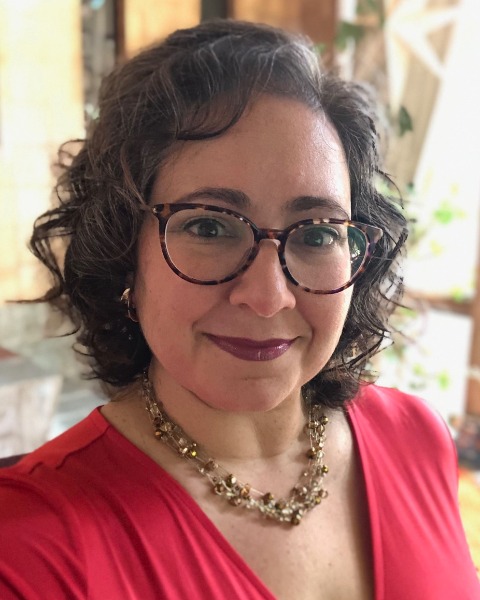Leadership
Beginner
First-time Attendee Pathway
Unleash Your Inner Bob Ross: Cultivating Creativity in the Professional Sphere
Friday, January 10, 2025
9:45 AM - 10:45 AM ET
Location: Osceola 1-3
.jpg)
Amanda Jamrogiewicz, CHCP (she/her/hers)
Commerce City, Colorado, United States

Audrie Tornow, CHCP, FACEHP
Hewitt, New Jersey, United States
Primary Presenter(s)
Co-Presenter(s)
Session Description: Dr. Albert Einstein once said that “…arts and sciences are branches of the same tree,” each one driven by a curiosity to understand and reflect upon the surrounding world. Healthcare education professionals are in a unique position to unite these branches in order to educate clinicians effectively and positively impact patient outcomes. According to the Association of American Medical Colleges, “Arts and humanities are essential to the human experience and their benefits to healthcare education go far beyond joys and pleasures. By integrating arts and humanities throughout healthcare education, trainees and physicians can learn to be better observers and interpreters; and build empathy, communication and teamwork skills, and more.”
Both arts and science are highly creative processes, demanding research skills, analytical thinking, and important decision-making abilities. So, what happens when CPD professionals hit the proverbial wall? In an everchanging field where the pressure to succeed is omnipresent, we are not only moving quickly, but are also putting in long hours on various tasks throughout the day. According to a study in the Proceedings of the National Academy of Sciences, “As people perform monotonous tasks, their brain shifts towards an at-rest mode whether they like it or not.” This study dubbed “rest mode” as autopilot, and it can certainly resonate with any professional moving through their day-to-day tasks.
So, how do we ensure our creative juices never stop flowing? The aforementioned study mentions the development of a device that would be placed on the head and would detect brain patterns that could then signal the brain to deviate from autopilot. While we’re years away from technology-directed brainwaves, there are myriad other strategies that professionals can utilize to keep the creative juices flowing.
This unique workshop is designed to unlock the creative potential within professionals across various industries. Attendees will explore a range of dynamic strategies aimed at fostering innovative thinking and creative problem-solving skills in their everyday work environments. The session will feature interactive exercises, case studies, and discussions that highlight the importance of creativity in driving business success and personal growth. Participants will learn how to overcome common barriers to creative thinking and will be equipped with practical tools to implement a more creative approach in their professional roles. This workshop promises to transform conventional thought patterns into opportunities for innovation, providing participants with the skills to think outside the box and apply these techniques to enhance their productivity and career trajectory.
Workshop Exercises May Include:
Trait Transformation
Bare Wall
Field Trip
Storyboarding
SCAMPER
Six Thinking Hats
Question Brainstorming
30 Circles
Strategy Circle
Alternate Uses
Both arts and science are highly creative processes, demanding research skills, analytical thinking, and important decision-making abilities. So, what happens when CPD professionals hit the proverbial wall? In an everchanging field where the pressure to succeed is omnipresent, we are not only moving quickly, but are also putting in long hours on various tasks throughout the day. According to a study in the Proceedings of the National Academy of Sciences, “As people perform monotonous tasks, their brain shifts towards an at-rest mode whether they like it or not.” This study dubbed “rest mode” as autopilot, and it can certainly resonate with any professional moving through their day-to-day tasks.
So, how do we ensure our creative juices never stop flowing? The aforementioned study mentions the development of a device that would be placed on the head and would detect brain patterns that could then signal the brain to deviate from autopilot. While we’re years away from technology-directed brainwaves, there are myriad other strategies that professionals can utilize to keep the creative juices flowing.
This unique workshop is designed to unlock the creative potential within professionals across various industries. Attendees will explore a range of dynamic strategies aimed at fostering innovative thinking and creative problem-solving skills in their everyday work environments. The session will feature interactive exercises, case studies, and discussions that highlight the importance of creativity in driving business success and personal growth. Participants will learn how to overcome common barriers to creative thinking and will be equipped with practical tools to implement a more creative approach in their professional roles. This workshop promises to transform conventional thought patterns into opportunities for innovation, providing participants with the skills to think outside the box and apply these techniques to enhance their productivity and career trajectory.
Workshop Exercises May Include:
Trait Transformation
Bare Wall
Field Trip
Storyboarding
SCAMPER
Six Thinking Hats
Question Brainstorming
30 Circles
Strategy Circle
Alternate Uses
Learning Objectives:
- Recognize common psychological and environmental obstacles that inhibit creative thinking.
- Develop creative thinking skills to foster a mindset that leverages creativity for problem-solving and decision-making.
- Apply creative thinking techniques to enhance personal and professional development.
